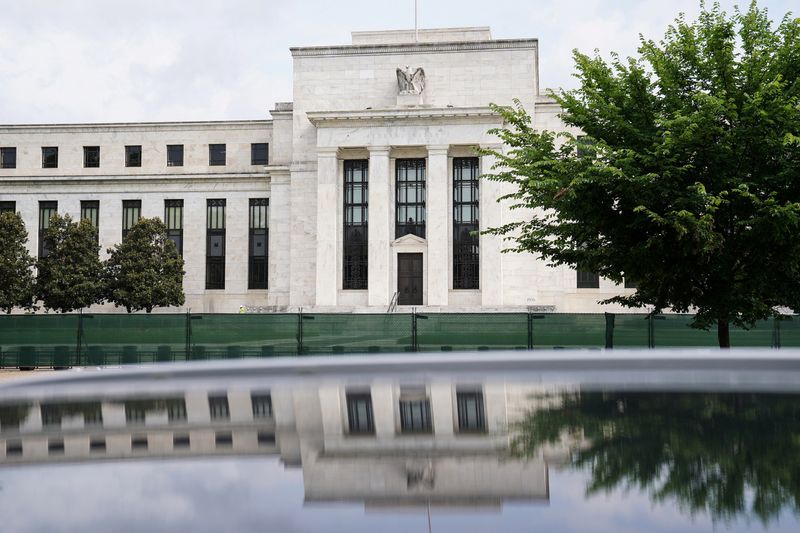Investing.com – Federal Reserve policymakers signaled no urgency to pivot to rate cuts as further confidence was needed to ensure that inflation continues slowing toward target just as concerns of "upside risks" emerge, according to the minutes of the Federal Reserve’s Jan.30-31 meeting released Wednesday.
"Participants generally noted that they did not expect it would be appropriate to reduce the target range for the federal funds rate until they had gained greater confidence that inflation was moving sustainably toward 2 percent," the minutes showed.
At the conclusion of its previous meeting on Jan. 31, the Federal Open Market Committee, or FOMC, kept its benchmark rate in a range of 5.25% to 5.5%.
In what was the fifth-straight meeting that the FOMC had decided to stand pat on rates, the central bank also underlined its less hawkish bias by acknowledging that "the policy outlook, participants judged that the policy rate was likely at its peak for this tightening cycle," the minutes showed.
Since the meeting, however, incoming economic data including upside surprises in recent inflation and labor market data have suggested that putting out the lingering embers of inflation could prove more challenging and the road to a ‘soft landing’ may be bumpier than many had expected.
The consumer price index for January slowed to a 3.1% pace on an annualized basis from 3.4% in the prior month, though that was less than expectations for 2.9%. While core CPI, which strips out the volatile food and energy and is considered a more accurate gauge of inflation, remained at a 3.9% pace in January, missing economists’ forecast of 3.7%.
The strong data appear to have filtered into the Fed's thinking as voting fed members highlighted "upside risk" to both inflation and economic activity, indicating that momentum in economic growth may likely be "stronger than currently assessed, especially in light of surprisingly resilient consumer spending last year."
Fed staff, meanwhile, believed "risks around the inflation forecast were tilted slightly to the upside ... and placed some weight on the possibility that further progress in reducing inflation could take longer than expected."
Adding to the growth-led inflation worries, an easing in financial conditions, the minutes noted, could cause "progress on inflation to stall."
The signs of life in recent inflation data forced investors to rein in their dovish expectations for rate cuts this year, with just four cuts now expected in 2024 rather than the six, or seven priced-in a few months ago. That, however, is still above the Fed’s projections, released in December, calling for just three rate cuts this year.
In a another sign, however, that the Fed is eyeing a less restrictive stance, Fed members hinted that the eventual slowing of its balance sheet reduction, or quantitative tightening, program is beginning to come into focus.
"Many participants suggested that it would be appropriate to begin in-depth discussions of balance sheet issues at the Committee's next meeting to guide an eventual decision to slow the pace of runoff," the minutes added.
The Fed has cut the size of its balance sheet to about $7.5 trillion from just over $9 trillion since starting its QT plan in June 2022 by allowing Treasury and mortgage-backed securities to mature rather than reinvest them.
